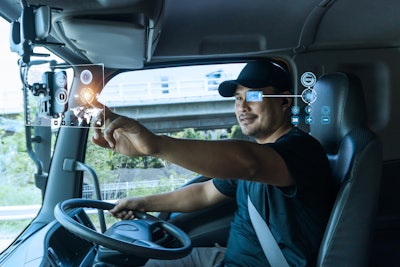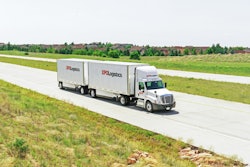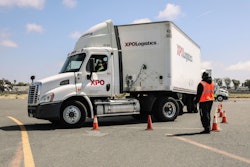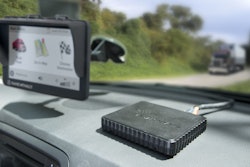
When a company or person makes a decision, and that decision is wrong, what do you do?
You change, or you suffer the consequences of both that decision and the decision to stay the course with that wrong decision.
Many such decisions have been made about our transportation system over the years. Maybe it is time to evaluate those decisions and see if any of them can be reversed for the good of society.
Dr. Edwards Deming and Walter Shewhart came up with a simple system for making quality decisions. Problem is, what appears simple is not simple and people refuse to do a good job of understanding and executing simplicity.
The PDSA System
CCJ Symposium: Time to Transform
Hear from your peers on driver recruitment and pay trends
Join us in person at the the 2021 CCJ Symposium, August 9-11, in Birmingham, Ala. CCJ Symposium assembles fleet executives, thought leaders, industry analysts and leading suppliers to give you concrete action items for trucking’s most pressing issues. We'll have multiple sessions to talk through how to:
- Transform Your Operation
- Transform Your Equipment
- Transform Your Workforce
Don’t miss what might be your first chance in a long time to collaborate and socialize in-person with your peers at the picturesque Renaissance Ross Bridge Golf Resort & Spa.
Planning. Simple enough. Make a plan. But how much planning? Do you plan for everything? Every contingency? So you planned a system, an example being the 41,000 miles of interstate highway system. The interstate highway system has had a negative effect on communities of color. Years later voices are saying, “Maybe we should do something about that.”
Do. Doing the plan. The problem is most people didn’t foresee the unforeseeable and never expected the unexpected. When flaws in the planning and doing phase are discovered, instead of following Dr. Deming’s teachings to go back and start over, corporate America moves forward.
“We have spent so much so far, we can’t go back to the drawing board.” This, according to Dr. Deming is a big mistake. The mistake is not admitting a mistake was made. Why is this? Because heads need to roll in corporate America. Responsibility must be assigned in corporate America. Too bad most of corporate America never heard of Dr. Deming’s philosophy and his fourteen points. Like point eight: Drive out fear. In other words, don’t be afraid to admit a mistake; no one should be afraid to continuously improve.
Study. Every manager wants the perfect study but history has taught us many studies are flawed. Many are flawed because management has a predetermined outcome and need to try and cover up the mistakes of the past. Mistakes in the planning stage. Mistakes in the doing stage. “We can’t scrap it, we have come so far,” is the refrain.
Act. Now the change for better quality is implemented, and when the project fails someone asks, “How the hell did we get to this point?” They say we followed PDSA literally to the letter.
The transportation industry has made major changes, which in retrospect could be considered bad decisions. Be forewarned, I am only going to propose a solution to one of the five problems. I want the readers to have a chance to think about these problems and put them in prospective for future discussions.
The transportation/logistics industry’s five biggest mistakes
1. Lack of diversity and inclusion of all Americans in the transportation industry.
2. Just-In-Time (JIT) Delivery.
3. Moving air while moving freight. If you need aerodynamics on a vehicle, you’re moving too fast and wasting fuel.
4. The trucking industry competes with railroads instead of integrating with rail from the very beginning. We have this entire rail infrastructure that is used once or twice a day in many areas. Think about it, what else, how else, can vehicles ride the rails? In today’s world, why build freight locomotive engines producing 4,000 to 18,000 horsepower pulling hundreds of rail cars. Why not build 50 horsepower autonomous power units to move individual rail cars one at a time? Why not build a flatbed rail car that could move a tractor, trailer and driver autonomously, one at a time, overnight from city to city. I see that as one possible future of transportation.
5. The easy one – one that we, as an industry, can solve right now. We have the technology. We have the management system. All we need is the will, the vision of a different future, and, of course, lobbyists with money to grease the wheels of Congress to get the DRIVE-Safe Act passed.
Here’s the problem
Somewhere along the line, a decision was made that 18 year olds were not to be trusted navigating 80,000 pound vehicles across state lines.
An 18 year old can drive an 80,000 pound vehicle intrastate (not across state lines), but since most trucking is interstate, there are few opportunities for 18 year olds to drive big rigs. The problem for trucking is, by the time a prospective driver is 21 years old, they have picked a career path other than truck driving or have started college.
[Related: Technology can address concerns with DRIVE-Safe Act]
There are those in the trucking industry that are developing technology to build self-driving trucks. That same technology can be used to educate a new breed of truck driver. Using artificial intelligence and machine learning, student drivers and their instructors can get immediate feedback on student performance.
In my research on this issue, I have discovered two companies with the capabilities, that when combined into one system, will revolutionize the trucking industry.
Entering the world of speculative business fiction, if and when the Tangerine technical system of sensors and cameras – and those are very big ifs and whens – is teamed with the Tenstreet driver management system, it will graduate professional truck drivers who are on a continuous improvement program from the very first second they get behind the wheel.
The first thought I wrote was: To become a truck driver, we start with high school grads with a B average. But on reflection, I was wrong. We should find out for sure who would be a great professional truck driver. Maybe the kid who has an aversion to “book learning” has a natural ability to go with the flow in traffic.
My vision for training truck drivers in the future
The student gets behind the wheel of a vehicle that is equipped with sensors and a management system that scores the quality of every trip, down to the minute if necessary. There is video of any and all incidents. Speed, hard braking, hard cornering and ridiculous acceleration all becomes data for the AI system to analyze and record forever.
The system records forever the student's performance and compares yesterday to today, and it will predict how well a student driver will be tomorrow. Truck drivers of the future will receive seamless and continuous coaching.
In other words, there will be no gaps in the driver’s performance history from student to retiree. In many ways this system will be like getting an aircraft pilot’s license. A pilot’s experience is logged by hours, type of aircraft and who the instructor was. A 16 year old can get a pilot’s license to fly an airplane, but an 18 year old can’t drive a truck across state lines.
The system can also help recognize outstanding drivers for their success. I can see enlightened management teams developing tokens of appreciation for deserving drivers.
Imagine trucking companies as sports teams and drivers as the most valuable players. This Tenstreet Tangerine system can crunch big data. The system could rate every driver in the system to each other. Just like a sports book has a national rating, so could the professional truck driver. All this data is kept in a secure repository and, like in sports, is available to those who need it.













